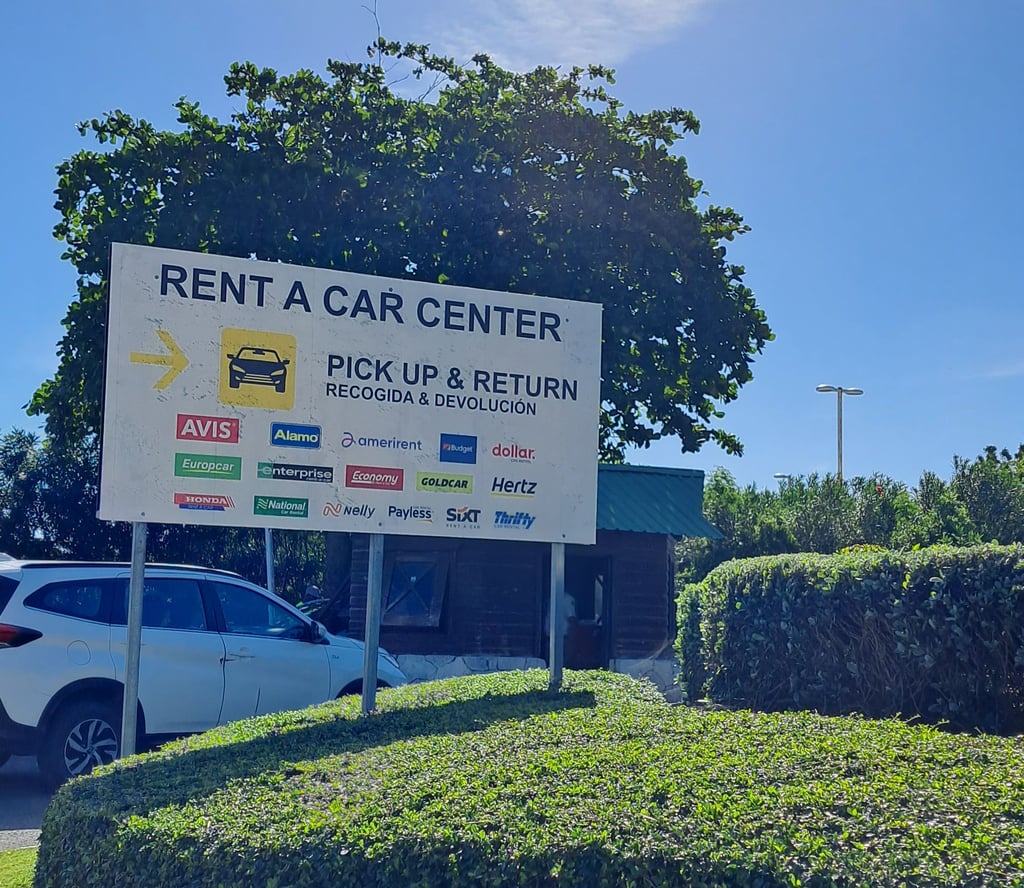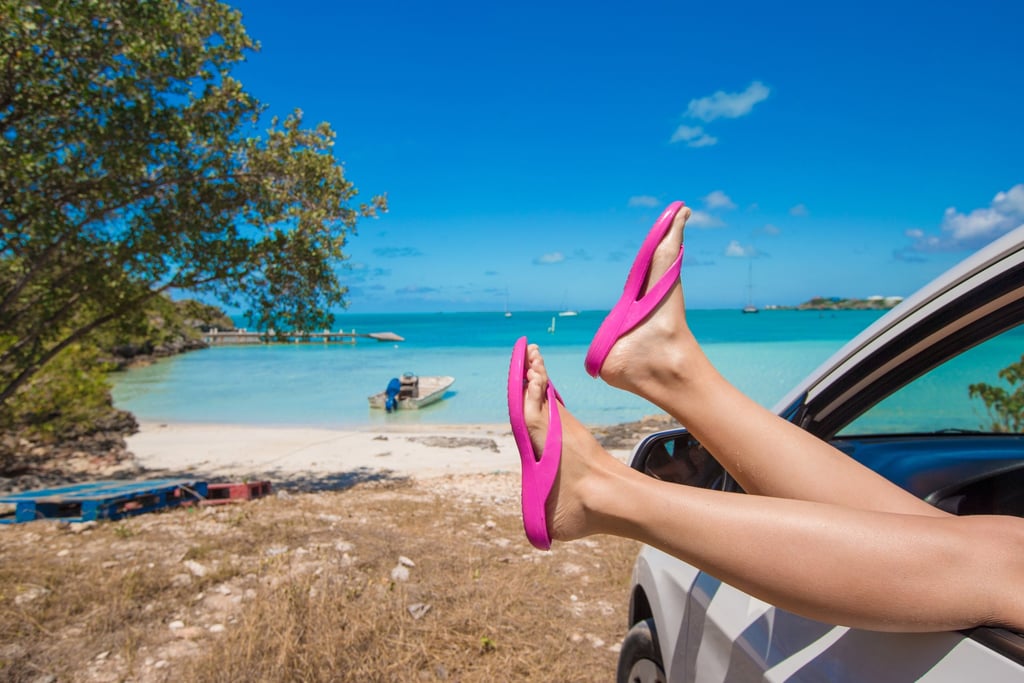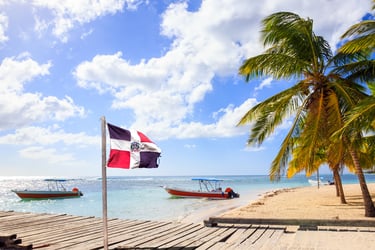TRANSPORTATION in the dominican republic
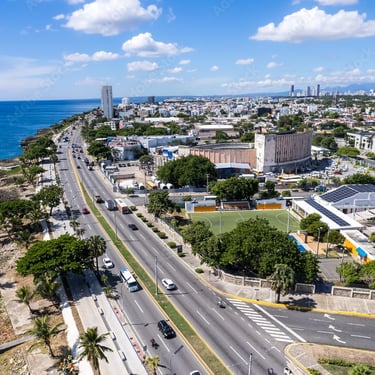
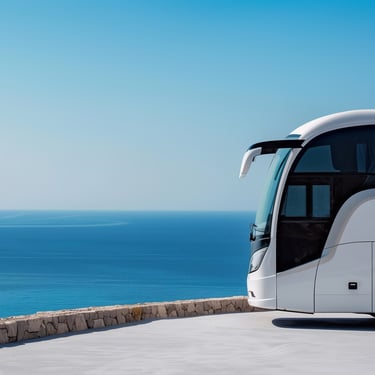
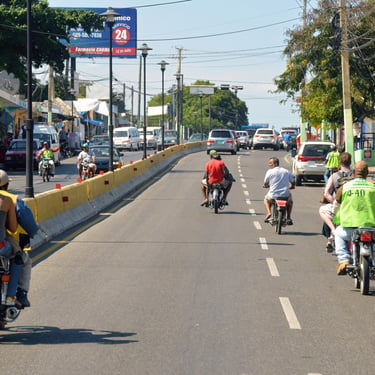
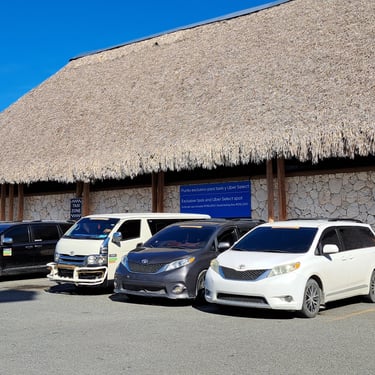
Transportation in the Dominican Republic is easy once you know your options. From airport transfers and public transportation to taxis, ride-sharing, and car rentals, there are many ways to get around safely and comfortably. This guide explains prices, services, and travel tips so you can choose the best option for your trip.
✅Airport Transfers
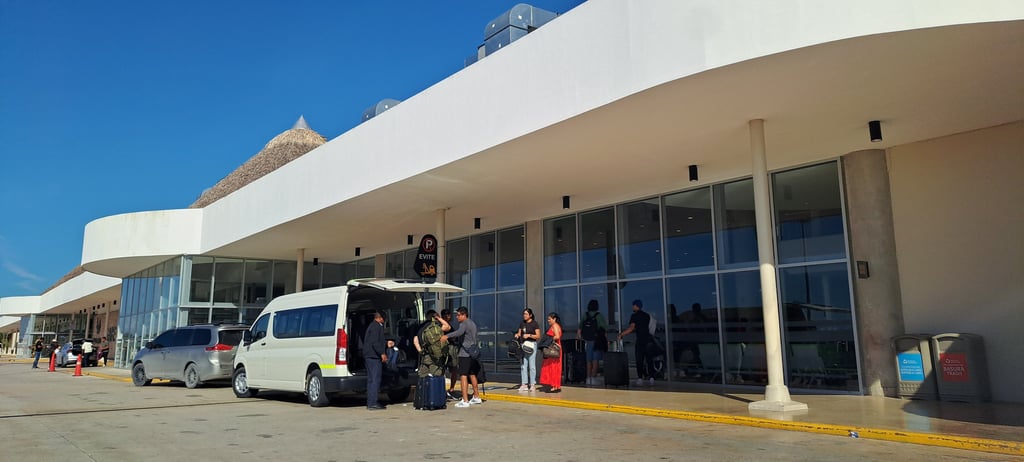

Airport transfers are the most reliable way to get from the airport to your hotel. With a pre-booked service, the price is set in advance, the driver is waiting when you land, and you avoid the stress of negotiating or looking for transport. For peace of mind, it’s best to book your transfer in advance. Check prices and secure your ride now through HolidayTaxis, Welcome Pickups, or Viator.
Arrival Transfers
At airports such as Punta Cana, Santo Domingo, and Puerto Plata, your driver will usually be waiting outside arrivals with a sign showing your name. Porters, called maleteros, may also offer to carry your bags and guide you to your vehicle, and tipping two to five dollars per bag is customary. If you want the fastest and most direct option, book a private transfer. Shared shuttles are cheaper but may involve waiting for other passengers and making stops along the way. VIP services are also available, with larger vehicles, more comfort, and sometimes even a cold drink on the ride.
Be cautious with anyone offering rides outside the official area. Unofficial drivers often charge more than agreed, and some people posing as transfer staff are actually vacation club representatives trying to invite you to a timeshare presentation. See our Vacation Clubs in the Dominican Republic guide for details.
Departure Transfers
On your way back to the airport, confirm your pickup with the provider at least a day before your flight. Traffic in Santo Domingo, Punta Cana, and Santiago can be heavy, so it’s smart to allow plenty of time and plan to arrive three hours before an international departure. Keep your passport and booking confirmation handy, and save your driver’s number since most companies use WhatsApp to update you if there are any delays. Tipping is also expected: around ten to twenty dollars for a private ride and five to ten dollars for a shared shuttle. See our Tipping in the Dominican Republic guide for more advice.
If you want extra comfort before boarding, you can also book VIP departure services. In Punta Cana, access to airport lounges is available with a Priority Pass, which gives you Wi-Fi, drinks, snacks, and a quiet space to relax. You can buy Priority Pass directly here.
Pricing
Prices depend on distance and service type. A private transfer from Punta Cana Airport to Bávaro is usually 30 to 40 USD, while the ride to La Romana costs between 80 and 120 USD. From Santo Domingo Airport to the Colonial Zone, fares are typically 25 to 35 USD. In Puerto Plata, transfers from the airport to Sosúa are around 30 to 45 USD. The longer drive between Punta Cana and Santo Domingo often costs 150 to 200 USD. Shared shuttles cost less, while VIP transfers are priced higher for more comfort and faster service.
✅Public Transportation
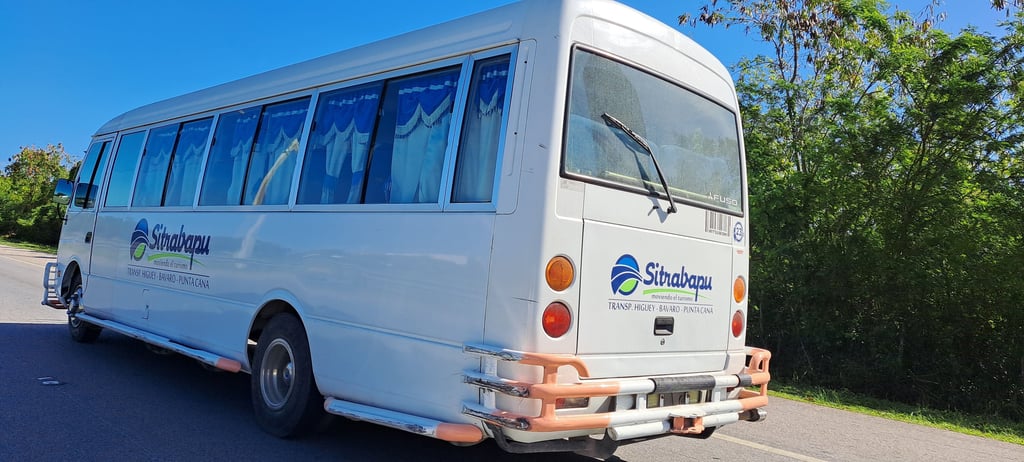

Public transportation is the most affordable way to move around the Dominican Republic. In Santo Domingo, you can rely on the metro, cable car, and buses; in Santiago, a monorail is under construction to ease traffic and connect key neighborhoods; and across the country, buses, guaguas, and motoconchos keep cities and towns linked. These services are cheap, frequent, and part of daily life.
The Santo Domingo Metro is the largest in the Caribbean, with two lines that cross the city north–south and east–west. A ride costs about 20 DOP (0.35 USD) and is paid using the rechargeable Boleto Viajero card or a single-trip ticket. It is safe, clean, and one of the fastest ways to avoid heavy traffic. See official info on the OPRET website.
The Teleférico de Santo Domingo is a cable car linked to the metro system. It connects hillside communities across the Ozama River with central areas and offers wide views of the city. A ride costs around 40 DOP (0.70 USD).
In Santiago, the country’s first monorail is under development. Once operating, it will link the north and south of the city, ease congestion, and shorten travel times, making it one of the most modern urban transport systems in the region.
Government-run OMSA buses also serve Santo Domingo and Santiago. They cover main roads, charge around 35 DOP, and fares are paid in cash. Carrying small bills makes transactions easier.
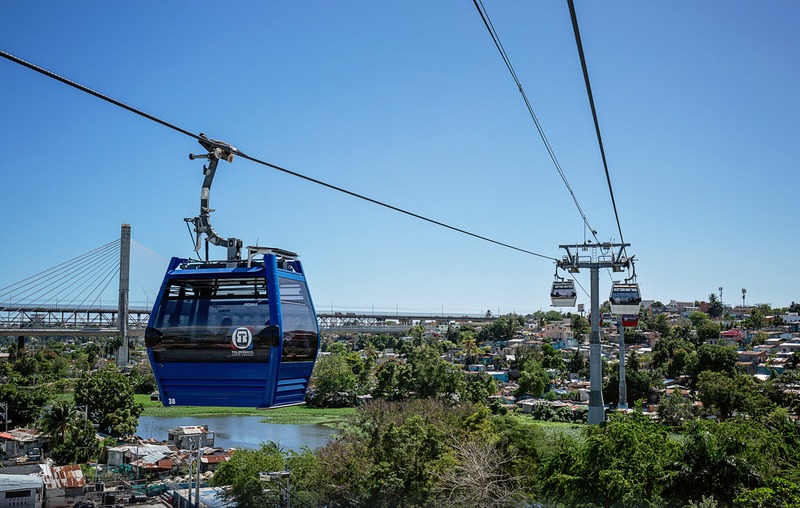

Traveling Between Cities
Large bus companies connect major destinations and are the most reliable way to travel long distances. Caribe Tours runs frequent routes from Santo Domingo to Santiago, Puerto Plata, Samaná, Barahona, Jarabacoa, and other towns. Fares usually range from 200–500 DOP (3–9 USD) depending on distance. Check timetables on the Caribe Tours Website.
Metro Servicios Turísticos also links Santo Domingo with Santiago and Puerto Plata, with similar fares. See schedules on the Metro Servicios Turisticos Website.
For the East Coast, Expreso Bávaro and Expreso Punta Cana provide daily service between Santo Domingo and the Bávaro–Punta Cana area. One-way fares are about 400 DOP (7 USD). Buses leave from Parque Enriquillo and Calle Juan Sánchez Ramírez in Santo Domingo, with stops in Friusa and Verón near Punta Cana. Visit the Expreso Bávaro website for the latest information.
Local Commuting
For short distances, guaguas (public minibuses) are everywhere. They cost 25–50 DOP, leave once full, and often stop along busy intersections and markets. Routes are not always marked, so asking the driver or passengers helps make sure you are on the right one. See our Culture and Language tips for simple Spanish phrases that can help.
Carros públicos (shared taxis) run along main avenues. They cost around 25 DOP per passenger and are a cheap way to move across town, though rides are crowded since several passengers share the car.
Motoconchos (motorcycle taxis) are the fastest way to get around traffic. They normally charge 50–100 DOP, but safety can be an issue, as helmets are not always provided. Always agree on the fare before you ride.
A newer service in Punta Cana is Poppi Express, three-wheeled vehicles that are safer than motoconchos and usually cheaper than standard taxis for short trips. They are especially convenient in resort areas for quick rides between hotels, shops, and beaches.
✅Taxis and Ride-Sharing
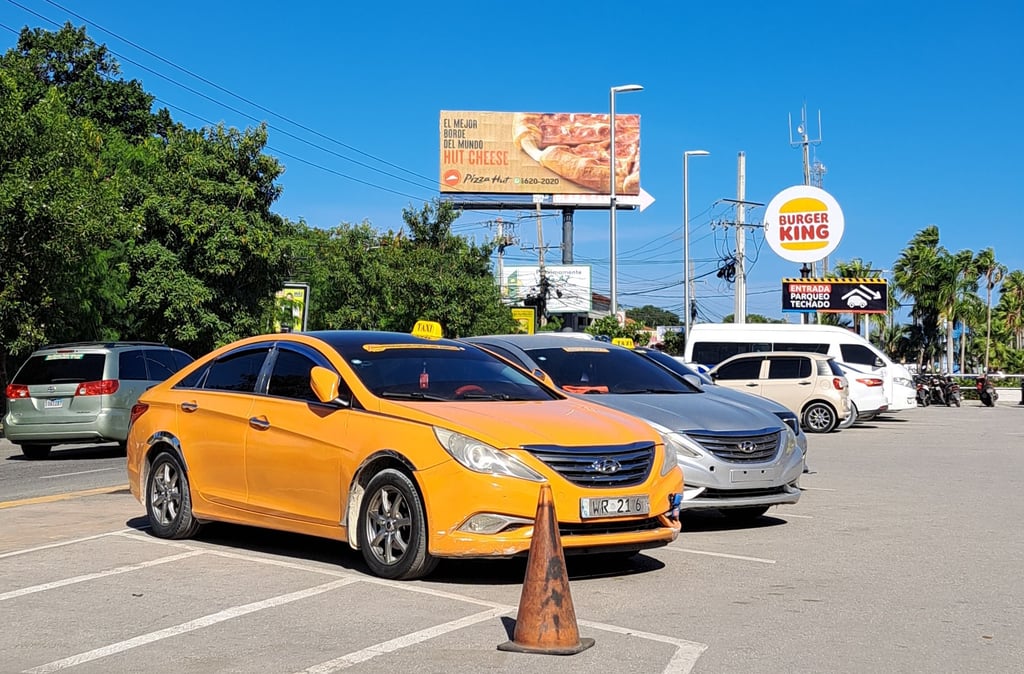

Taxis and ride-sharing apps are a straightforward way to move around cities and resort areas. You will see taxis waiting outside hotels, restaurants, and shops, while ride-sharing apps like Uber make it simple to book a car through your phone. These options give you more comfort and flexibility than public transport and are widely used in Santo Domingo, Santiago, and Punta Cana.
Traditional Taxis
Taxis are easy to find at airports, resorts, and city centers. They are reliable but usually more expensive than ride-sharing, especially in Punta Cana, where taxi associations keep fares high. A ride from Punta Cana Airport to Bávaro hotels is typically around 30–35 USD, while trips to Uvero Alto can be closer to 60 USD.
Meters are rarely used, so it is best to agree on the fare before starting the ride. Payments are normally made in Dominican Pesos, but in tourist areas many drivers also accept US dollars. Carrying smaller bills helps, since change is often limited. See our Money in the Dominican Republic guide for currency tips.
Most taxis have air conditioning, and while some drivers speak basic English, knowing a few Spanish phrases makes communication easier. ,Check our Culture and Language tips for simple words that can help. If you are going out late, arranging your return taxi in advance is a smart idea, since availability can be limited at night.
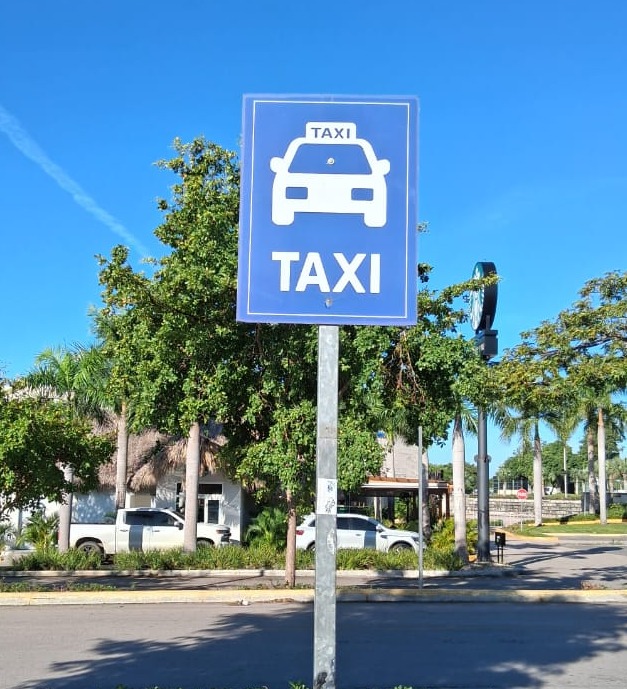

Ride-Sharing Apps
Uber is available in Santo Domingo, Santiago, and Punta Cana. For city rides it is often cheaper than a taxi, with short trips in Bávaro costing only a few dollars. The app shows you the fare in advance, gives you the driver’s details, and allows secure card payments. Prices are always shown in Dominican Pesos, even if your card is billed in US dollars.
In Punta Cana, there are limits on where Uber can pick up passengers. Uber X drivers are not always allowed to enter resort properties or airport grounds, so you may need to meet them outside. Uber Select is the option that can enter lobbies and airport zones, but it costs more. Always confirm pickup locations in the app, or ask your hotel staff to point you to the designated area.
Other ride-sharing services, such as Nekso, also connect passengers with licensed taxis, though they are less common than Uber. To use any ride-sharing app, you will need a stable internet connection. Stay online throughout your trip with an eSIM card for the Dominican Republic.
✅Car Rental
Renting a car in the Dominican Republic is one of the easiest ways to explore the country beyond the resort areas. Public buses and guaguas cover only certain routes, and private transfers can become expensive for longer distances. Having your own car gives you the freedom to stop along the way, discover hidden beaches, chase waterfalls, and visit mountain towns that most tourists never reach.
Check car rental prices on EnjoyTravel.com or compare options on Booking.com before your trip to find the best deals.
Requirements for Renting a Car
Most agencies accept a foreign driver’s license, although carrying an International Driving Permit can make the process smoother. The minimum age is usually 25, but some companies allow younger drivers with an added fee. A credit card is required for the deposit, and debit cards are rarely accepted. Basic insurance is normally included, but coverage is limited. Many travelers choose to add full insurance or rely on credit card protection.
Choosing the Right Vehicle
The car you rent should match your travel plans. Compact cars are practical for city driving and short coastal trips. If you are heading into the mountains of Jarabacoa, Constanza, Samaná, or Barahona, an SUV or 4x4 is recommended since rural roads can be rough. Gasoline is relatively expensive in the Dominican Republic, so a smaller, fuel-efficient car is usually the most economical choice unless you plan to explore a lot of backroads.
See rental options here and book early to secure the best prices, especially during high season.
Driving in the Dominican Republic
Driving requires patience and alertness. In Santo Domingo and Santiago, traffic is heavy and drivers can be unpredictable, while rural roads often lack signage and lighting. Night driving is best avoided outside major cities because visibility is poor and livestock or pedestrians can appear suddenly.
Highways are generally in good condition, and toll roads such as the Autopista del Coral make travel between cities faster. Keep small bills or coins ready for tolls. Navigation apps such as Google Maps and Waze are reliable for directions and traffic updates. Before leaving the rental lot, check the car thoroughly, take photos of any damage, and keep belongings out of sight when parked.
Rental Companies and Roadside Assistance
International agencies like Avis, Budget, and Sixt operate throughout the country, and there are also smaller local companies that sometimes offer lower prices. Always check reviews if you book with a local provider.
Gas stations are common on major roads, with Shell, Total, and Isla being the most reliable brands. Most accept both cash and cards.
For emergencies, roadside assistance is usually offered by rental companies, but the government also operates a free service through COMIPOL. Since August 2025, the official number for highway assistance is 511. You can call it to report breakdowns, flat tires, accidents, or dangerous conditions. The service replaced the older hotline and now provides faster coverage nationwide. For serious emergencies, dial 911.
Scenic Road Trips in the Dominican Republic
Renting a car makes it easy to enjoy some of the country’s most spectacular drives.
✔️Santo Domingo to Punta Cana (3 hours): A modern highway connects the capital to the country’s top resort destination. Along the way you can stop in La Romana for beaches and take a detour to Altos de Chavón, a recreated Mediterranean village overlooking the Chavón River. Read more about Altos de Chavón here
✔️Barahona Coastal Drive (4 hours from Santo Domingo): This southwest route is famous for dramatic ocean cliffs, river crossings, and roadside stalls selling coconuts and fresh fish. You will pass natural swimming spots like San Rafael and Los Patos waterfalls before reaching Bahía de las Águilas, a pristine beach often called the most beautiful in the Dominican Republic. Discover more of the best beaches in the Dominican Republic
✔️Santiago to Jarabacoa (1.5 hours): A winding mountain road leads to pine forests, fertile valleys, and the Yaque del Norte River. Jarabacoa is known for waterfalls such as Jimenoa and Baiguate, as well as outdoor activities like rafting and paragliding. For a cooler escape, continue toward Constanza and its highland farmlands. See our full guide to the best waterfalls in the Dominican Republic
Planning to drive one of these routes? Check availability on Booking.com or reserve a car on EnjoyTravel.com before arriving.
FAQs About Car Rental in the Dominican Republic
✔️Is driving safe in the Dominican Republic?
Yes. Highways are good, but city traffic can be hectic and rural roads lack lighting. Avoid night driving and always wear your seatbelt.
✔️Which side of the road do people drive on?
Dominicans drive on the right-hand side of the road.
✔️What documents are required to rent a car?
You need a valid driver’s license, your passport, and a credit card for the deposit. Some agencies may ask for an International Driving Permit.
✔️How old must you be to rent a car?
Most companies rent to drivers 25 and older. Some allow 21+, but charge a young-driver fee.
✔️Are there hidden fees with car rentals?
Yes. Watch for airport surcharges, young-driver fees, charges for extra drivers, or cleaning costs. Always check the contract before signing.
✔️Do I need additional insurance?
Basic coverage is included but limited. Many travelers buy full insurance for theft and damage, or use credit card insurance.
✔️What if the car breaks down or I’m in an accident?
Call your rental company first. On highways, dial 511 for free roadside assistance from COMIPOL and RD Vial, or 911 in an emergency.
✔️Can I add another driver?
Yes, if they meet the same requirements. Expect a daily fee for each additional driver.
✔️Can I cross into Haiti or return the car in another city?
Crossing into Haiti is not allowed. One-way returns within the Dominican Republic are possible if arranged in advance, usually with an extra fee.
✔️Where is the best place to book a rental car?
The easiest way is to compare deals online. Use EnjoyTravel.com or Booking.com to check prices, insurance, and reviews before booking.
Explore the Dominican Republic with DR Simplified – Your Viator Travel Shop!
Discover the best excursions, cultural experiences, and adventure tours in the Dominican Republic, all handpicked for travelers like you! Whether you're looking for stunning beaches, historical sites, or thrilling activities, our Viator shop offers top-rated tours with trusted guides. Book with ease and make your trip unforgettable!
Terms and Conditions © All rights reserved 2025
Affiliate Disclaimer
Some links on DR Simplified are affiliate links. If you make a purchase or booking, we may earn a commission at no extra cost to you. Thanks for your support!

